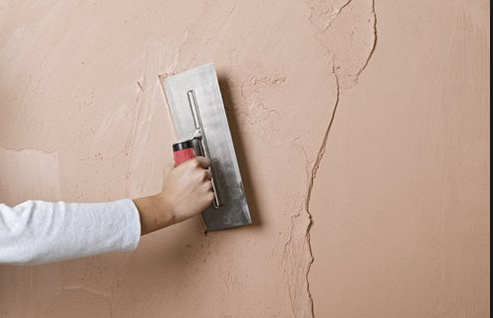Exterior Plastering: Protect and Improve Your Property with Competence
Exterior Plastering: Protect and Improve Your Property with Competence
Blog Article
A Comprehensive Guide to Mastering Plastering Skills for Your Remodelling Demands

Crucial Tools and Materials
Different crucial tools offer distinctive purposes, guaranteeing effectiveness and precision throughout the plastering process. A top quality trowel, for instance, is important for using and smoothing plaster, while a hawk supplies a steady platform for holding the material.
Along with tools, selecting the best plastering materials is crucial. Gypsum-based plasters are commonly liked for their convenience and simplicity of usage, while cement-based options are excellent for exterior applications because of their toughness. Water and bonding agents play significant functions in accomplishing correct consistency and adhesion, guaranteeing that the plaster adheres effectively to the surface.
Additionally, protective equipment such as handwear covers, masks, and goggles is important to protect versus dirt and inflammation during the application process. By constructing the best mix of products and devices, plasterers can improve their ability and produce premium surfaces, eventually raising the total craftsmanship of their work.
Preparing Surfaces for Gluing
Attaining a resilient and smooth plaster surface begins with precise prep work of the surface areas to be plastered. This foundational step is crucial to guaranteeing adhesion and the longevity of the plaster. Beginning by evaluating the problem of the substratum-- whether it is concrete, drywall, or stonework-- eliminating any type of loosened paint, dirt, or particles that might hinder bonding.
Following, fix any kind of blemishes such as cracks or openings. Use an ideal filler to accomplish a degree surface area; this can be crucial for stopping future issues. As soon as fixed, guarantee the surface is dry and clean, as moisture can compromise plaster adherence.
For permeable surfaces, it is suggested to use a bonding agent. This product boosts attachment and develops a reputable interface in between the plaster and substratum. If working with formerly plastered surfaces, it might be essential to mess up or sand the area gently to offer a secret for the brand-new plaster layer.
Plastering Techniques and Tips
Understanding smudging strategies needs both ability and method to accomplish a flawless finish. One necessary technique is the application of the plaster in numerous thin layers, rather than a single thick layer. This approach permits better attachment and minimizes the risk of cracking. Begin with a base coat, guaranteeing it is uniformly spread out and leveled with a hawk and trowel. Make use of a straightedge to inspect for any kind of blemishes prior to proceeding to subsequent layers.
When applying the finish layer, use a shoveling technique that includes holding the trowel at have a peek at this website a small angle and functioning in a round movement. This aids to create a smooth surface and minimizes the appearance of trowel marks. Additionally, keep a spray container of water handy to mist the surface area gently; this maintains the plaster workable and permits smoother finishing.
Timing is critical; work efficiently, as the plaster starts read this post here to set. When the plaster has tightened however is still moist, make use of a moist sponge to gently smooth the surface area additionally. Last but not least, allow sufficient drying out time before fining sand or paint, guaranteeing your effort leads to an expert, top notch surface.
Typical Mistakes to Stay Clear Of

An additional common mistake is using plaster also heavily. Overzealous applications can result in fracturing and long term drying times. It's important to apply plaster in thin, also layers, enabling each layer to completely dry effectively prior to including much more.
Furthermore, not making use of the right devices can prevent the high quality of the surface. Utilizing inappropriate trowels or mixers can produce inconsistencies in the smudging process. Always choose top quality tools created for gluing tasks.
Finally, lots of people take too lightly the review importance of timing. Operating in unsuitable temperature levels or moisture levels can adversely influence plaster curing and drying. It is a good idea to inspect climate condition and adapt your routine accordingly.
Completing Touches for a Specialist Appearance
The final phases of a gluing task are important for accomplishing a refined, specialist look. Once the plaster has dried completely, the next action is to assess the surface for flaws.
After sanding, it's a good idea to cleanse the surface to eliminate any kind of dirt and particles. A wet fabric works for this function, adhered to by a thorough drying period. If essential, applying a slim layer of ending up plaster can improve the surface area even more, offering a seamless coating.
When the finishing plaster is dry, one more round of sanding may be called for to accomplish the wanted level of smoothness. Finally, think about using a primer before painting or wallpapering, which will certainly boost bond and sturdiness.
Final Thought
Understanding gluing skills significantly enhances the quality of remodelling tasks. A comprehensive understanding of important tools, surface area preparation, and effective techniques is essential for achieving professional outcomes. Recognition of usual mistakes enables for the avoidance of pricey mistakes, while focus to ending up touches makes certain a polished look. Ultimately, the assimilation of these components adds to the creation of smooth, resilient surface areas that boost the visual worth of any type of space, emphasizing the significance of skilled plastering in home renovation undertakings.
Water and bonding representatives play significant duties in achieving appropriate consistency and bond, making certain that the plaster sticks successfully to the surface area. Plastering.


In addition, keep a spray bottle of water handy to haze the surface area gently; this keeps the plaster practical and allows for smoother completing. (Plastering)
If necessary, applying a thin layer of ending up plaster can enhance the surface area better, supplying a smooth coating.
Report this page